Suurupi is about 30 minutes’ drive from Tallinn City Centre. Urban people are looking for activities for evenings and weekends. One of the pleasurable activities is walking in nature. This region offers not only beautiful nature, but also history gems. What could be more pleasant?
Last Russian tsar, Nicholas II, began to overthrow the borders of his state due to troubling times in Europe at that time. One of these is the so-called Suurupi Naissaare Porkala line, which was supposed to stop a potential enemy at the mouth of the Gulf of Finland. Due to rising steel prices and revolutionary moods, most of the facilities remained unfinished. Currently mysterious crows and holes are reminiscent of that time.
In 1759, counter-admiral Mordvinov proposed to the Admiralty College to build a lighthouse on the Suurupi Peninsula. The lighthouse began operation in 1760, probably with an open fire. At the end of the 19th century, the dwelling, sauna, oil house, cellar and barn of the light station were completed.
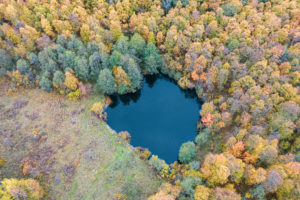
In 1907, after the defeat in the Russian-Japanese War (1904-1905), a new Tsarist state defence programme was created in which Tallinn played an important role. It was decided that a naval base for the Baltic Sea Navy would be established here and Tallinn and Porkkala naval fortresses were planned to support and block the mouth of the Gulf of Finland.
Descent from the Historic Shoreline
A staircase with stone steps leads down from the Suurupi upper lighthouse. From here, the watchmen rushed to the lower lighthouse or siren station. Since getting off the bank is not very convenient or even impossible, these places are a kind of life line that linked the people of the coastal villages to life on the bank.
Soviet-era Summer Cooperatives
The first Dachshas ascended the Suurupi coastal meadows at the upper lighthouse below the bank and around the Suurupi railway station. Suurupi roundabout was built in 1980 and bus line 147 also began to travel, with a spectacular array of berets and golden teeth. There are currently many summer houses adapted for year-round living, with over 1,100 residents permanently living in Suurupi. In summer the population multiplies.
Beach Battery Searchlight Tower and Shelter
Battery II position stands out with its magnificent searchlight tower and was called the American Battery by locals, whose cannon-firing sector covered the area as far as Paldiski. The searchlight shelter was located 300 m to the southwest of the artillery base, the spotlight rolled to the shore edge position. During the Republic of Estonia, the battery was placed at the disposal of the Estonian Defence Forces under the name of Coast Guard Battery No. 6, and in 1920 the battery was also tested and the shielding of the battery fixed.
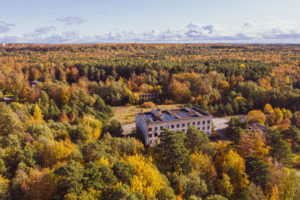
Bible School
Bible School arrived in Suurupi with the departure of USSR troops. In order to reduce vandalism, the Pentecostal Church or the Bible School as locals call it, was brought into the campus. The church wanted to enlighten the lost souls and help them return to the right path. During Christian camps, praises of the Holy Spirit could be heard throughout the village. The congregation left the complex in 2004, and the area is currently managed by Harku rural municipality.
USSR Military Facilities
Estonia is full of Soviet Union military facilities, especially present close to the coast. Suurupi was located on the edge of the bank. Paldiski reserve harbour with supporting troops was established on the coast, the coastline is full of embroidered Border Guard positions and still usable hiking trails along the edge of the sandstone bank.
Selfie with a Swan
Making a selfie with the swans at the Swan Gulf shore. When traveling to Suurupi, we recommend that you take a selfie stick or come and buy it at Suurupi lighthouse.
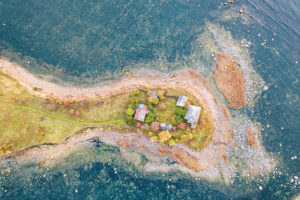
Suurupi’s name has historically evolved from the Estonian words “Suur” (Big) + “pea” (head), with Surpe as a place name on old maps. The most beautiful cape on the peninsula is called Ninamaa. Cape Ninamaa and Suurupi boulders, or reefs, have sunk many ships in storms and fog. In order to better protect the ships in the fog, a Fig Light Station was built in 1998, along with a siren watchman house and a kerosene fence. Currently, the cape is thin due to sea waves and buildings are in danger of falling into the sea.
Blown up Battery
In the area between the two batteries, hidden in the greenery, another mysterious blown up concrete shack can be found. It is known that there was a searchlight shelter from which the searchlight was pushed to the top of cape Neeme to illuminate the sea for cannons. The building also housed a generator station and probably ammunition supplies however, the building was blown up during the October Revolution.
Fire Control Point
There is something else mysterious and unexpected in the forest, like a lonely tower on a hill. The tower has long been abandoned, and it may come as a surprise that the tower is not part of Peter the Great’s naval fortresses, but was established by the USSR forces in 1953 as a fire control point.
Cobblestone Road
Suurupi cobblestone roads were built in connection with Peter the Great’s fortress to move heavy loads between the fortress positions and the railway without sinking into the soil. Today, most of the roads are covered with asphalt, but there are still some sections that lead to the coast.
Catacombs (bring a flashlight)
Battery III position was designed to cover the area between the Suurupi Naissaare peninsula using 6″ cannons. During the Republic of Estonia a Suurupi Commandant was established here and the battery was named the Coast Guard Battery Number 9. As an active community activity, the area and passageways have been cleaned and can be explored underground in nearly 100-metre passages.
Suurupi Statue of Liberty
Suurupi Statue of Liberty was unveiled on 20 August 2017 and represents the Estonians’ quest for freedom and their relationship with the sea. Everyone can have their own exact interpretation. Created by Silver Treiman, Hiiumaa’s jigsaw sawing specialist, the female figure is made from aspen that fell on a beach in Suurupi during a storm.
Soviet Union Border Guard Point
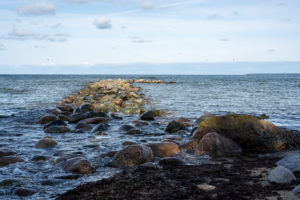
Pilot Harbour
Suurupi pilot station served ships visiting the Port of Tallinn. In 1918, the Republic of Estonia received a coastal sea full of minefields as military heritage with only narrow shipping routes cleaned with trawls. In such waters it was impossible to navigate without a pilot. Lootsi observatory was located high on the edge of the cliff near Suurupi upper lighthouse to defeat Naissaar pilots in bitter competition. Suurupi pilot, who is leaving from Tallinn, is still operating today and assisting large and dangerous cargo vessels in navigating the Gulf of Tallinn.
Suurupi Railway
A train could also be taken to Suurupi and at Sõrve railway station, one narrow-gauge railway branch turned to Suurupi and Viti along the edge of Muraste bog. A preserved railway station building (privately owned) is also present in Suurupi. A second branch from Rannamõisa Church, along the current Tilgu Road, made its way to the coast and reached the edge of Suurupi Pilot Harbour. The narrow gauge railway was in use between 1913 and 1959.
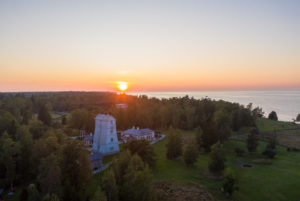
In the middle of the 19th century, sailors continuously complained about the poor condition of the navigational equipment in the Russian waters. In 1859, a wooden beacon was built in Suurupi, 2245 m from the Rear Lighthouse. Lantern chamber finished in 1885.
 Suurupi.Travel
Suurupi.Travel 